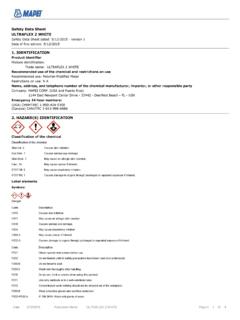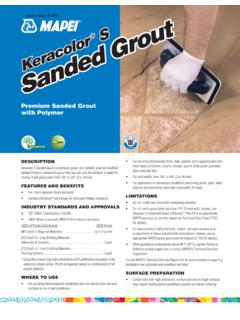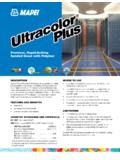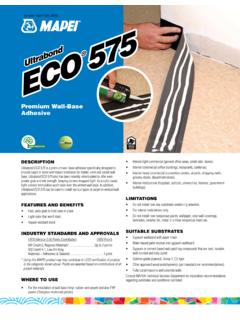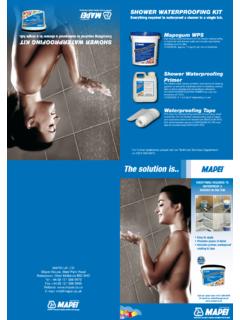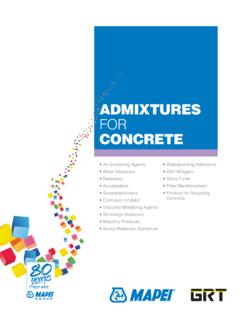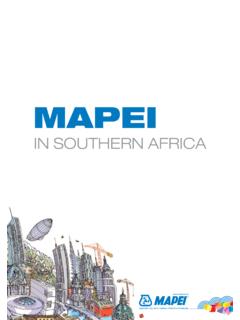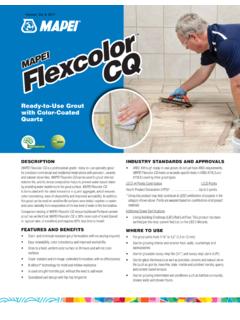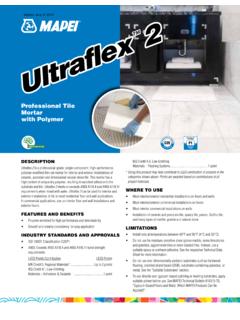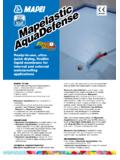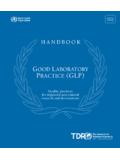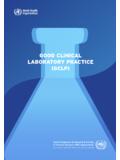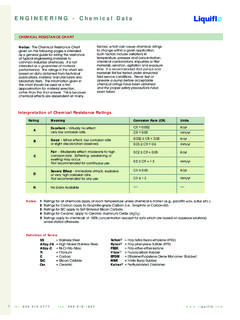Transcription of I N C O MP L I A K erapo Ke r apo CQ N C E W I TH …
1 Xy EN 12004. ITH EUROPEA TH EUROPEA. o CE W NS E WI NS. AN EN 12004 NC 13888. EN. A. TA. TA. PLI. PLI. NDA. NDA. IN COM. IN COM. RDS. RDS. p R EA CT. IL E S. IC T. UT. IO N. RE. a Q. ES. AM. ER CT. O. IN. R. A D H E SI V E F O R C GR. A. ION. RESIN. er C. K. Two-component epoxy grout, easy to apply and excellent cleanability, with a bacteriostatic agent and BioBlock technology, ideal for grouting ceramic tiles and mosaics. Can also be used as an adhesive CLASSIFICATION ACCORDING TO EN 13888 G. routing of floor tile finishes in the foodstuffs industry Kerapoxy CQ is an RG-class reactive (R) grout for tile (dairies, cheese factories, abattoirs, breweries, wineries, joints (G). preserves factories, etc.), shops and environments where a high level of hygiene is required (ice-cream Kerapoxy CQ is certified by the University of Modena parlours, butchers shops, fishmongers, etc.)
2 (Italy) according to ISO 22196:2007 standards as a G. routing of anti-bacterial tiles. grouting mortar protected against the formation and G. routing of surfaces where a high protection against proliferation of micro-organisms. the formation and proliferation of micro-organisms is required. CLASSIFICATION IN COMPLIANCE WITH G. routing tiles on laboratory benches, kitchen EN 12004 worktops, etc. Kerapoxy CQ is an improved (2) reaction resin G. routing industrial floor tile finishes (galvanizing adhesive (R) classified as R2. plants, tanneries, battery rooms, paper works, etc.), where high mechanical strength and a high resistance WHERE TO USE to attack by acids is required. Internal and external grouting of ceramic, stone material G.
3 Routing swimming pools, especially recommended and glass mosaic floor finishes. Particularly suitable for pools containing spa or sea water. for grouting large areas where easy application and G. routing floor tile finishes in steam rooms and cleaning is required. Turkish baths. Kerapoxy CQ allows you to create floors, walls and A. cid-resistant bonding of tiles (used as an adhesive in worktops, etc. in compliance with the HACCP system compliance with class R2 specification according to and the requirements of EC Regulation No. 852/2004 EN 12004 standard). regarding hygiene and foodstuffs. B. onding marble doorsteps and window-sills. Also suitable for acid-resistant bonding and rapid B. onding tiles in plastic reinforced by fibre glass setting of ceramic tiles, stone materials, fibre-cement, swimming pools.
4 Concrete and any other building material on all types of B. onding special pieces of tiles. substrates normally used in construction. Kerapoxy CQ may also be used to grout unglazed Some application examples klinker, stone, polished porcelain or porcelain in Grouting materials with an uneven surface where contrasting colours. Always apply a small sample of it would be difficult to apply and clean traditional the product in a trial area before using Kerapoxy CQ. epoxy mortar. on wider surfaces. oxy TECHNICAL CHARACTERISTICS all the contents are mixed together. Do rap Q Kerapoxy CQ is a two-component, epoxy not rough guess the quantities when Ke C. resin-based product, with silica sand and mixing the two components: hardening will other special components.
5 It has excellent be compromised if the catalysing ratio is resistance to acids and is very easy to clean. wrong. Kerapoxy CQ has a bacteriostatic agent, preventing from the proliferation of bacteria If hardened and Kerapoxy CQ has to be and the formation of mould on the surfaces removed from the joints, use an industrial of grouts, making tiled surfaces hygienic hot air blower. If hardened localized and safe, thanks to the innovative BioBlock residues of the product remain bonded to technology developed as a result of MAPEI the tiles, use Pulicol 2000 for cleaning. research. This is a product with very low emission of ACID RESISTANT GROUTING. volatile organic compounds and is classified APPLICATION METHOD. Emicode EC1 R Plus by GEV when used for Preparation of the joints grouting.
6 The joints must be clean, free of dust and When applied correctly, it produces tile joints free from adhesive to at least 2/3 of the with the following characteristics: thickness of the tiles. Any adhesive or mortar e xcellent mechanical strength and which has seeped into the joints while laying resistance to chemicals, therefore excellent the tiles must be removed while still fresh. durability; Before grouting, make sure the installation s mooth and compact, surface finish mortar or adhesive has set and most of the which is non-absorbent and easy to clean; moisture has been lost. guarantees a high level of hygiene and Kerapoxy CQ is not harmed by damp from blocks the formation of mildew and mould; the base, but the joints must not be wet when h igh degree of hardness, excellent grouting.
7 Resistance to heavy traffic;. Spreading Kerapoxy CQ. using a MAPEI float n o shrinkage and, therefore, no cracking; Preparation of the mix u niform colour, resistant to atmospheric Pour the catalyser (part B) into the container agents; of part A and mix well until a smooth paste is excellent workability, highly improved obtained. We recommend using a low-speed compared with traditional epoxy mortars electric mixer to guarantee perfect blending, thanks to its creamy consistency, which and to avoid overheating of the mix which guarantees faster application times and would reduce working times. Use the mix makes it easier to clean the surfaces, with within 45 minutes of preparation. less waste and easier to obtain a good finish.
8 Application RECOMMENDATIONS Spread Kerapoxy CQ over the tiled surface E ven if it already seems clean after passing with a special MAPEI grout float, making over the surface with a rubber float, always sure that the joints are filled right down to clean the surface using a Scotch-Brite pad the bottom. With the edge of the same float, and water, to emulsify traces of resin on the strike off excess material. surface which could otherwise modify the final surface finish. Finish Use Kerapoxy IEG to grout ceramic and After grouting with Kerapoxy CQ, floor where floor finishes will be subject to finishes must be cleaned while the grout is attack by oleic acids (ham curers, sausage still fresh . factories, oil mills, etc.)
9 And aromatic Cleaning of the joints may be carried out Cleaning the surface hydrocarbons. using a small amount of water and an with water and U se a flexible sealant from the MAPEI abrasive sponge for cleaning joints (such single-head rotary range (such as Mapesil AC, Mapesil LM or as Scotch-Brite or MAPEI tile-joints machine with special abrasive felt discs, such Mapeflex PU45 FT) for flexible expansion cleaning kit), followed by a cellulose sponge as Scotch-Brite joints or for joints subject to movement. (MAPEI sponge, for example), taking care K erapoxy CQ does not guarantee perfect to avoid removing grout from the joints. bonding if the edges of the tiles are wet The sponge must be saturated with water or contaminated with cement, dust, oil, when cleaning finishes.
10 Grease, etc. during grouting. The residual liquid may be removed with D o not use Kerapoxy CQ to grout the same sponge, which must be replaced terracotta tiles, the finish of the tiles may when it becomes too impregnated with resin, be altered. and the same technique may be used when A lways carry out preliminary tests before finishing off the grouted joints. grouting stone or ground porcelain with a After the finishing operation, it is very porous or rough surface. important that no traces of Kerapoxy CQ. D o not add water or solvents to remain on the surface. Once hardened, it is Kerapoxy CQ to increase its workability. very difficult to remove. U se the product at temperatures Therefore, rinse the sponge often with clean between +12 C and +30 C.
